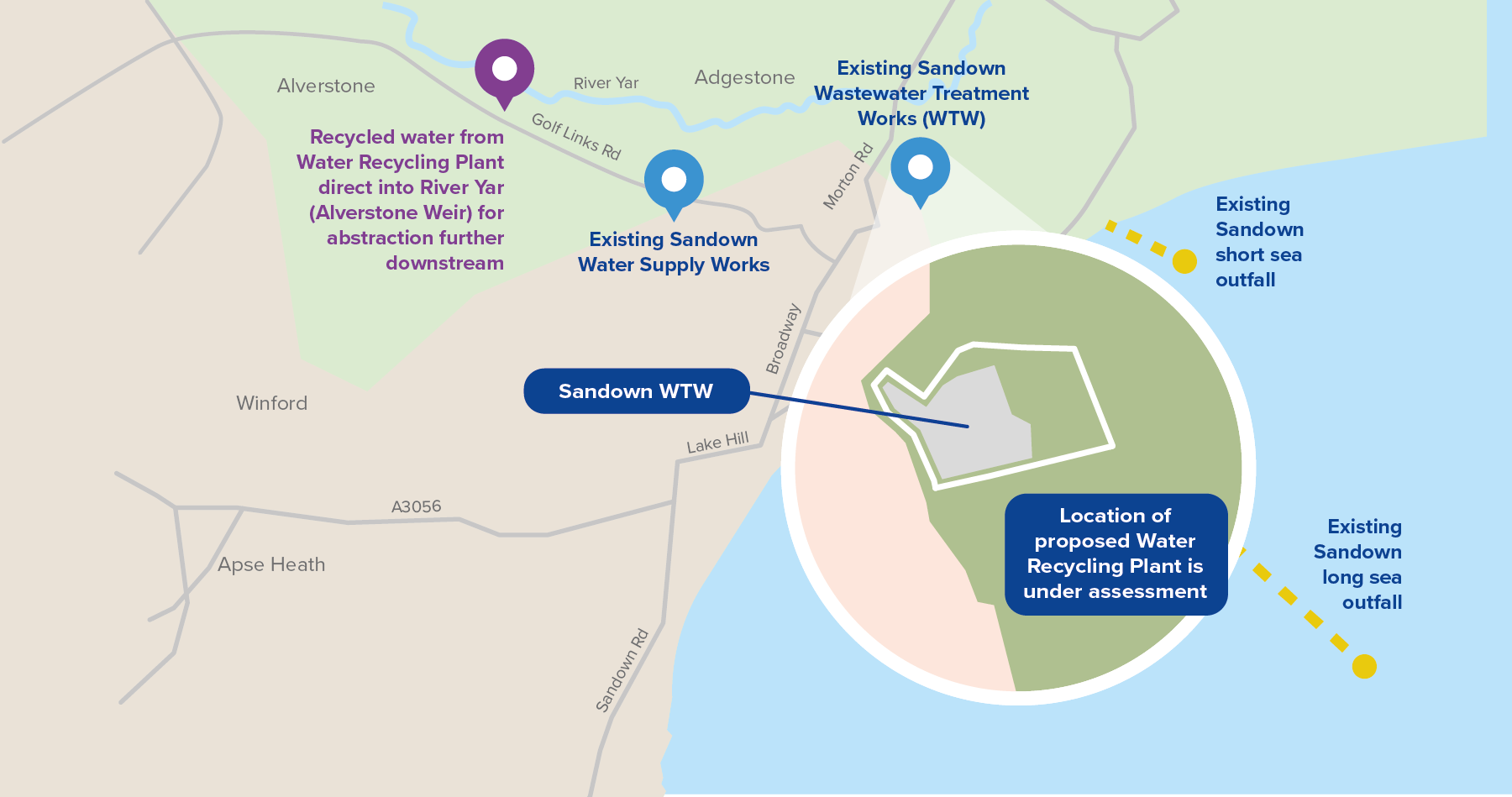Our Water Recycling Plant
We’re proposing to recycle wastewater at our Sandown Wastewater Treatment Works. We plan to use advanced wastewater treatment processes at a new facility to clean the water before it's transferred to our proposed new water recycling plant. At the water recycling plant, the treated wastewater would be purified further using tried and tested advanced water recycling techniques. After purification, the treated recycled water would be used to supplement the Eastern River Yar levels for further abstraction downstream. We would then pump the water to the existing Sandown Water Supply Works. Here, it would be treated to drinking water standards and supplied to our customers on the Isle of Wight.









